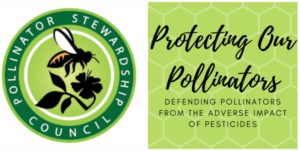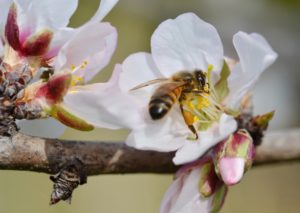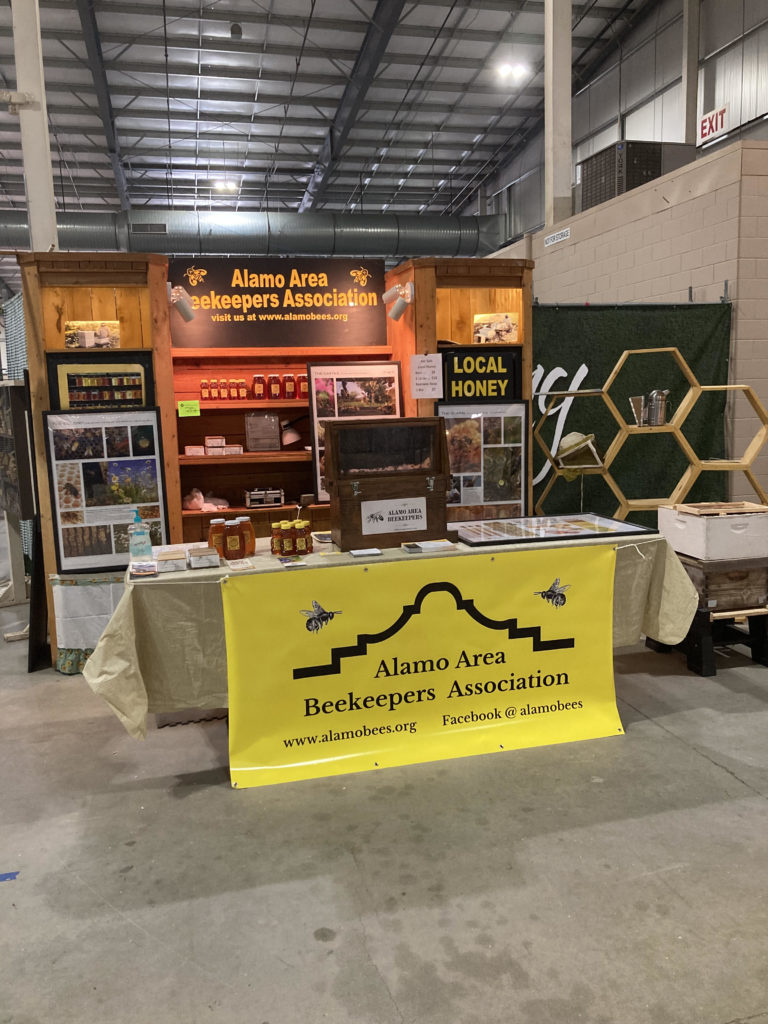|
|
|
|
|
|

It’s time again to rally and support the beekeeping community! We are formally requesting the help of every beekeeper: you, your neighbors, your bee club and all the beekeepers you know.
The survey is open and accepting responses from April 1st to April 30th 2022. Please take a moment to submit your response to help us continue to inform about impacts to honey bee colony health.
Visit beeinformed.org/take-survey to join in the effort, learn more, and take the survey!
We rely on word of mouth to reach as many beekeepers as possible. Please share this survey announcement far and wide with your beekeeping friends and local club members!



Most commercial beekeepers send bees to California for almond bloom. An effort of this magnitude can provide a wealth of information; because there are so many colonies, when a beekeeper notices something unusual, it is likely that other beekeepers may have similar experiences.
If you placed hives in almonds this year, PSC needs your help. We have received reports of unusual brood behavior and significant loss. Observers report seeing brood emerging with their proboscis paralyzed and protruding, unable to eat, staggering around, and dying. Some seem to never fully develop and die while pupating, leaving piles of dead pupae on the ground at the hive entrance.
It seems that it may be easy to miss damage as it is observable only at a specific stage and in many circumstances this damage would have already occurred by the time the beekeeper does inspections. Therefore, it is most likely seen immediately upon return from almonds. It has impacted roughly 1/3 of colonies of those reporting, and photos of this damage may be seen below. If you have had a similar experience, please contact us here or email info@pollinatorstewardship.org as we are trying to determine impact and cause.
Click for larger image
California is reviewing proposed regulations governing the use of neonicotinoids to protect bees, a process that has been ongoing for some time but the outcome of which will have a significant impact on pollinator health in the state and the future of neonic use in our country as a partial or full ban could pave the way for other states to employ similar regulations around the use of this dangerous class of chemicals. With the help of our scientific advisory board, the Pollinator Stewardship Council and Earthjustice have been submitting comments throughout this process. Once again, we plan to submit substantive, written comments detailing the damaging effects of neonics on pollinators including the longer term impacts of sublethal, chronic exposure over time. The Pollinator Stewardship Council invites you to consider submitting comments before the April 25th deadline, visit the California DPR page for more information.
|
|
|
|
The Department of Entomology at Texas A&M University seeks applicants for a vacant Chief Apiary Inspector position for the Texas Apiary Inspection Service (TAIS). The duties and responsibilities of the Chief Apiary Inspector include overseeing all activities of TAIS including regulatory actions, supervising personnel and developing the educational aspects of the program. As the Chief of TAIS the incumbent has the statutory authority to propose rules that support enforcement of the Texas Administrative Code that governs TAIS activities (http://txbeeinspection.tamu.edu/regulations/).
Specific Duties. The incumbent must maintain a good working relationship with the Texas Beekeeping Association (TBA). This includes attending their annual and summer meetings and to provide updates on regulations and rules to enforce those regulations. In addition to working closely with TBA, the Chief serves as the primary point of contact for USDA when TAIS is requested to participate in national surveys whereby samples are to be collected from apiaries. On rare occasions it may become necessary to declare a quarantine for specific colonies or beekeeper(s) to contain disease, exotic pests, or undesirable races of honey bees. While TAIS is not an agency that enforces regulations, it does work with local police and county judges to file charges where appropriate. This may result in seizure of bees, equipment, pollen, and honey, to enforce bee laws and regulations. The incumbent will work with municipalities on honey bee-related issues and code recommendations and will serve as a point of contact for media interviews regarding honey bees.
Principal apiary inspection duties include overseeing the inspection of regulated honey bee colonies and issuing permits for import, export, and intrastate movement of colonies and issuing certificates of inspection. Record keeping in electronic format is done through an in-house data management system that documents apiary inspections. The Chief or his/her designee(s) will maintain records on permits issued, email lists, and other necessary data needed to operate TAIS. The primary focus of TAIS is to serve the full-time, commercial honey producers and those beekeepers focused on pollination services. TAIS is also charged with educating the public on topics related to beekeeping. This is accomplished by coordinating the Texas Master Beekeeper Program.
The incumbent is to work closely with TAMU faculty who are actively engaged in apiculture research. The Chief and his/her staff may participate in applied research projects that will assist beekeepers with management of honey bee diseases, parasites, and pathogens, but there needs to be a direct tie between the research activity and their regulatory responsibilities. The incumbent is expected to attend national professional society meetings as appropriate, including the annual meeting of the Apiary Inspectors of America. The appointee will be responsible for maintaining a website and an electronic payment system for permits.
Administrative Relationship. The Chief reports to the Department Head of Entomology and is responsible for writing a detailed annual report. Data captured in this report serve as evidence that the activity of the unit is such, that the specific requirements of the unit in state statutes are being accomplished. The Chief will supervise an Assistant Chief Apiary Inspector and as necessary other Apiary Inspector(s) and provide continuing education for TAIS staff as appropriate.
Qualifications. The Chief will have at a minimum a B.S. degree in Entomology or a closely related field with 3+ years of experience in working with honey bees. The preferred candidate will have 5+ years experience in honey bee regulatory activities. Preference will be given to applicants with an M.S. degree where the focus of their research was on some aspect of apiculture. The successful candidate will have experience in relevant regulatory activities and in supervising personnel. The preferred candidate will demonstrate a working knowledge of the beekeeping industry through direct experience. The successful candidate will demonstrate an ability to identify and recommend appropriate action to minimize the impact of honey bee pests, parasites, and diseases. The incumbent needs basic laboratory and computer skills and fiscal management experience. Evidence of successful grantsmanship is desired. The incumbent must have excellent verbal and written communication skills, must not be allergic to bee stings, be able to lift 50 pounds repeatedly, work outdoors in remote locations and in difficult conditions, and able to travel for extended periods of time. Applicant must be eligible to operate a state vehicle. If necessary, the Chief may be required to obtain through the Texas Department of Agriculture a certified pesticide applicator’s license paid by TAIS.
To Apply: General inquiries about this position may be sent to:
Carla Smith
Department of Entomology
Texas A&M University
College Station, TX 77843-2475
U.S.A.
979-845-9739
E-mail: carla.smith@ag.tamu.edu
A complete position description and specific duties is available in Workday through which all applications must be received.
For internal applicants, please search Workday for position: R-48639.
External applicants apply at https://tamus.wd1.myworkdayjobs.com/AgriLife_Research_External/job/College-Station-AL-RSCH/Chief-Apiary-Inspector_R-046839
Follow website directions for completing an on-line application and uploading and attaching a cover letter, resume, college transcripts and other supporting documentation. The position is available immediately. Interested individuals are encouraged to submit their applications ASAP. We anticipate reviewing applications in mid-April 2022, conducting interviews with an expectation that a new Chief inspector can begin by no later than July 01, 2022. Contact Carla Smith (above) if you experience problems. All individuals must apply via this on-line application process. We CANNOT accept walk-ins or applications/resumes via email and/or mail.
The Texas A&M System is an Equal Opportunity/Affirmative Action/Veterans/Disability Employer committed to diversity Committed to Diversity.
It’s always a pleasure to see the folks out on the land getting together and exchanging experiences and ideas. It’s a fantastic opportunity to learn from the members discussing their success and what they’re not going to do next year. Truly reinforces the old saw that there is no one-way to work a bee yard, collect swarms or do removals.
While we have TBA leaders in many clubs throughout the state visiting and helping in local club meetings, I personally had the opportunity to visit several clubs recently and wanted to share a little of the good news and efforts we are seeing in some of our local club associations throughout Texas. I visited the Central Texas, Temple Area and Concho Valley Beekeepers Associations for their monthly meetings.
In Brenham, the Central Texas Beekeepers are in the middle of their planning for the upcoming Beekeeping School on March 26th. The camaraderie shown by the Central Texas Team to walk thru the details and discuss the resources necessary to put together a event of such a large scope, in front of visitors, is AMAZING.
TBA will also be present at the school with merchandise and pamphlets. I had the opportunity to discuss several of the additional benefits TBA providing for our members, encouraged the group to go online and enroll if they are not already members. Also updated them on TBA’s support to Hives for Heroes by sharing mentors with the organization.
The Temple Area Beekeepers’ invited guest for their monthly meeting was Dennis Herbert, he led discussions on the Ag Valuation process in support of beekeepers, what records need to be provided, maintained and above all, the need for good relations with the local Appraisal District offices. Dennis also went into the details on how the Appraisal Districts came to their determinations of valuing property utilized for beekeeping and the potential for adjustment if the circumstances support the changes, Concho Valley Beekeepers in San Angelo are restarting their in person meetings now, had the opportunity to update the club on TBA updates, passed on the benefits of membership, the growing schedule of events such as the Central Texas School, upcoming Summer Clinic in Temple and the Convention later this year. I was also able to meet with a Hives for Heroes NewBEE and began coordinating for his Mentor from the local club.

There is so much opportunity throughout the state to spread bee knowledge and experience.
San Antonio – The Alamo Area Beekeepers are staffing their booth Fridays, Saturdays and Sundays at the San Antonio Stock Show and Rodeo, I missed going the first weekend of the Show, looking forward to maybe this weekend. They will be there through February 27th, stop by and say hello if you are in the area.
The Houston Livestock Show and Rodeo will be next month, the Harris County Beekeepers will be well represented there. Same goes – Stop by and enjoy the company!
Charlie McMaster, TBA Club Liaison
The 12th Annual (Covid Delayed) Beekeeping School, hosted by the Central Texas Beekeepers in Brenham, will be held on Saturday, March 26, 2022.
The one day school will feature beginning, intermediate and advanced classes. There will be topics for all levels of experience.
Beginning topics will include What Should I Buy, Where To Get My Bees, and How To Extract Honey. There will be a 3-hour Beekeeping 101 class that all beginners are encouraged to attend.
Those that have had bees for several years can attend classes on Botteling and Selling Honey, How To Raise Queens and Managing Pests of Bees.
For the advanced beekeeper, there will be sessions on The Biology Of Mating, Bee Communication (Pheromones) and Growing From Sideliner To Commercial.
Other topics of interest to all levels will be Texas Apiary Laws, The Healing Effects of Honey, Apitherapy, and Planting for Pollinators. There will even be a separate 5- hour class on Top Bar Hives.
For those interested in Flow Hives, we will have a live Zoom session from Australia with Stuart Anderson, inventor of the Flow Hive. Stuart has donated a Flow Hive that will be given away as a door prize.
A catered Bar-B-Que meal is included with the event and major door prizes will be awarded at the end of the day. The last time the school was held, there were 660 folks in attendance.
Registration for the school is $65 with a second adult from the same family being $60. Students are $25 while children below 12 are $10.
To register, go to www.tinyurl.com/2022BeeSchool. For more information, you can email centraltexasbeekeeper@gmail.com or call 878-277-0411.